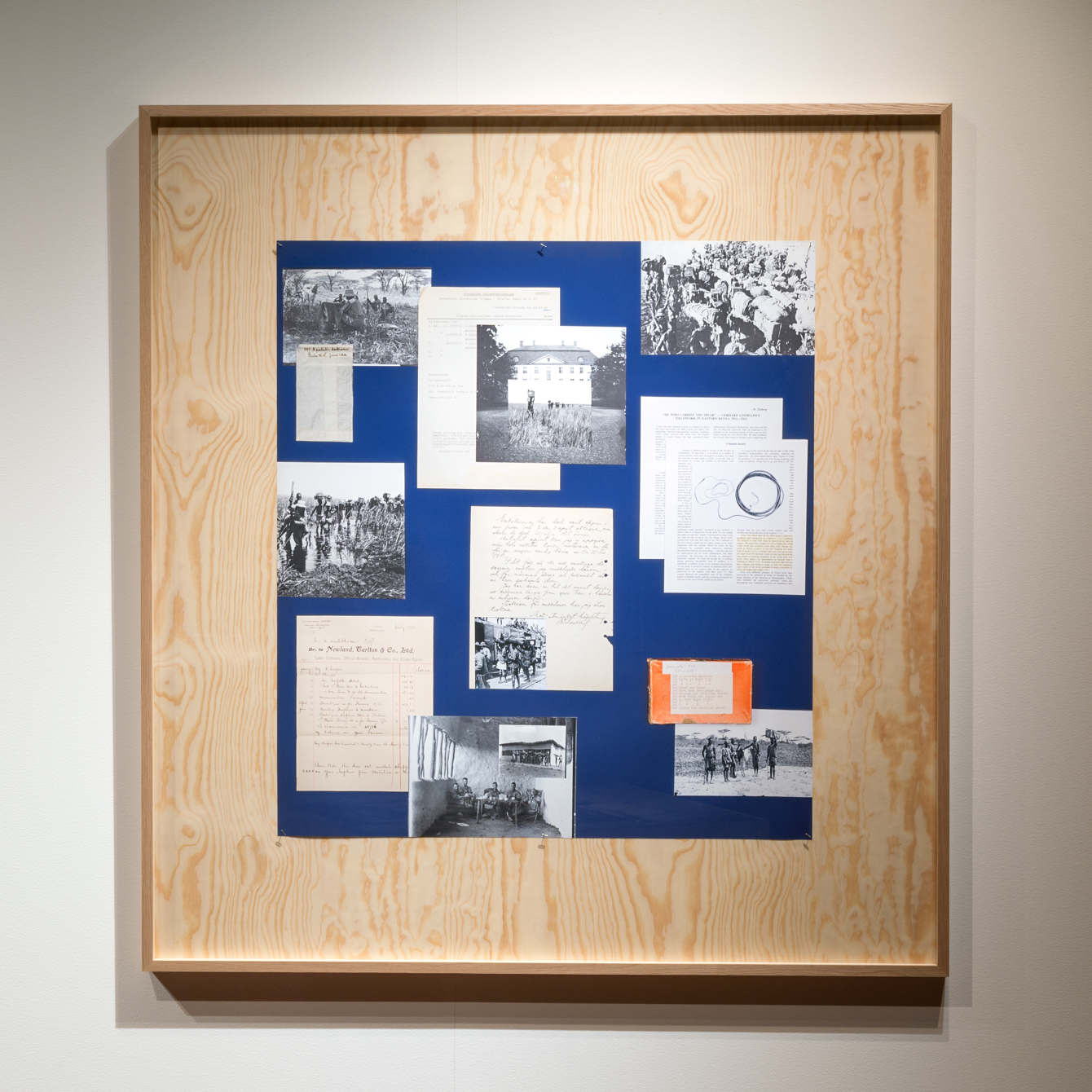By Joanne Mikula, Staff Writer
White men have long dominated the art world, deciding which objects are worthy to appear in museums and framing the surrounding discourse. The mechanisms of this domination are the subject of Swedish based research-artist Jacqueline Hoàng Nguyễn’s exhibition “Black Atlas”, currently on view at Haverford’s Cantor Fitzgerald Gallery (CFG).
A small exhibition consisting of only eight works, “Black Atlas” uses archival photographs and other assorted archival documents to explore the question of how artwork from around the world was transported to the West. The title of the exhibition is a reference to the mythical figure of Atlas who carried the world on his shoulders. By invoking a black Atlas, Nguyễn references the people of color forced to literally carry the culture of the world on their shoulders to the West. Nguyễn pays attention to the ways in which Western explorers exploited indigenous peoples and coerced them into physically moving material culture back to Europe.
In an interactive gallery lecture on Feb. 2, Nguyễn explained her creative process and further discussed the issues with which she was grappling. “Black Atlas” grew out of Nguyễn’s three-month residency with the Museum of Ethnography in Stockholm, where it first appeared before coming to Haverford. During her residency, Nguyễn became interested in looking at the photos and documents in the museum archives through a post-colonial lens. This method of looking at the photos prompted her to conceive of “Black Atlas”, an exhibition that would turn “the ethnographic gaze upon itself.”
This exhibition is by no means Nguyễn’s first foray into the field of post-colonialism; in fact, most of her work consists of reviewing archival material through the lenses of feminism and post-colonialism. Her post-colonial interest is particularly notable given that “Black Atlas” first appeared at the Museum of Ethnography in Stockholm before coming to Sweden: “The social democratic project in Sweden only functions when it is homogenous,” said Nguyễn. “Multiculturalism is a nascent conversation in Sweden, and it is a delicate conversation.”
If “Black Atlas” marks a departure from the traditional discourse in Sweden, it also marks a departure from the exhibitions usually on view at the CFG. “This project is quite different from previous CFG exhibitions as it was made from and in response to a particular archive at a particular institution,” said CFG Associate Director Matthew Callinan. “To have it shown outside of that context creates a certain disconnect, but as a result does open up a new approach to looking at the work and the questions it poses.”
Haverford students involved in running the gallery worked with Callinan to install the exhibition. CFG Student Assistant Jo Kravits ’21 was in charge of creating a virtual layout of the exhibition in the 3D modeling program Sketchup. “All the work I put towards designing ‘Black Atlas’ now exists in real life!” said Kravits. “That transformation from a screen to a physical product was so cool to see.”
CGF Student Co-Managers Eleni Smitham ’19 and Graham Mauro ’20 meanwhile praised the exhibition for its depth. Both Smitham and Mauro described the exhibition as initially “unassuming” but ultimately multilayered and profound. Discussing the piece N° 17, 2016, a deceptively simple banner that hangs in the center of the room, Mauro said “Even the material, the print on cotton, has significance. Jacqueline is using the different mediums to make it clear that it is not about the literal crate, but rather what that crate does and what it represents (cotton also being a material with a colonial and racialized history).”
Photographs, which make up the foundation of the exhibition, also have a colonial and racialized history. As Nguyễn mentioned in both her speech and her wall text, photography was used during colonization as “a kind of currency in order to control indigenous bodies and make them perform for the scientist’s benefit.” By highlighting her use of materials and techniques that are saturated in colonization and racial domination, Nguyễn more fully achieves her goal of turning the ethnographic gaze upon itself. “Black Atlas” is an intellectually challenging and rewarding exhibition that opens a host of questions about race relations, the ethical history of museums, and the practice of ethnography.
“Black Atlas” is on view at the Cantor Fitzgerald Gallery from Jan. 26 to March 9.
Photo from Jacqueline Hoàng Nguyễn’s website
